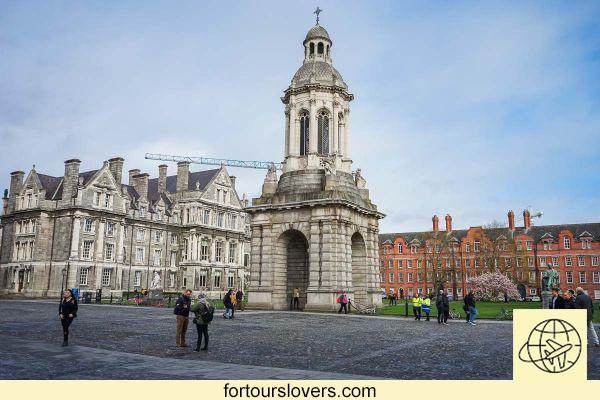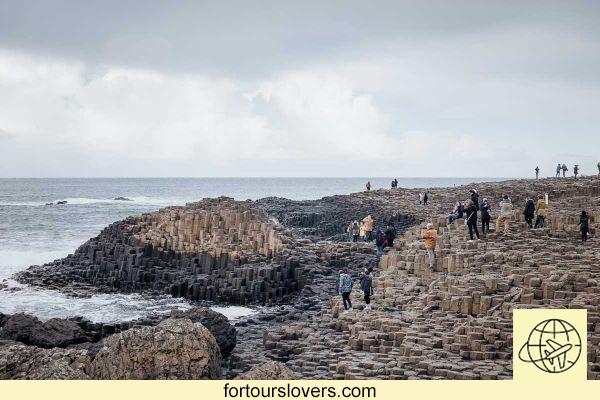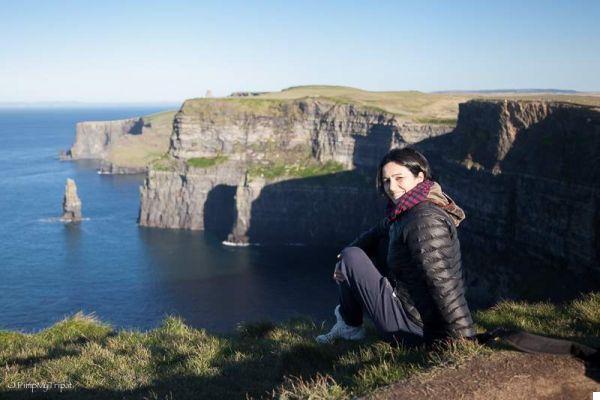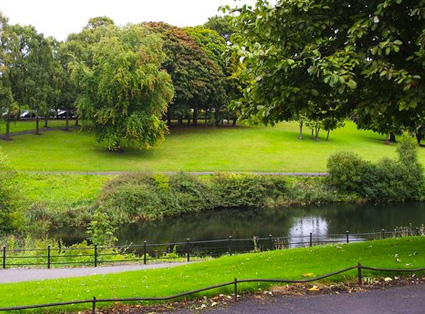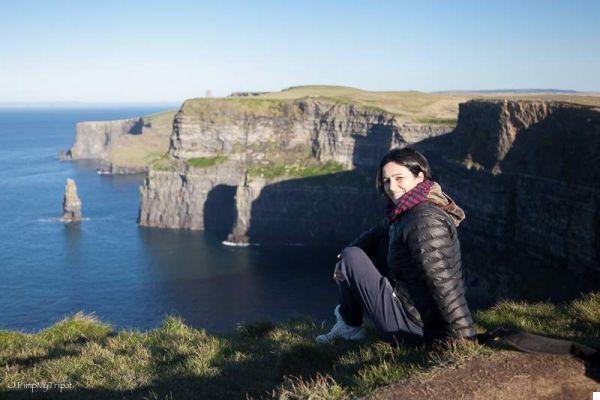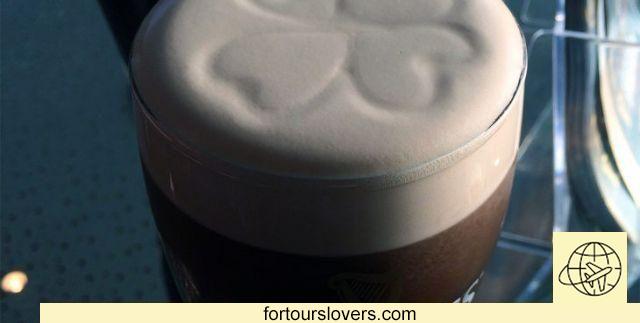
Dublin
9 things to do and see in Dublin and 3 not to doFind the bright side in every situation. This is it main quality of Dubliners. An attitude daughter of a past of suffering which for years has forced many of its inhabitants to emigrate in search of a better future. Then things changed radically: the economy, at the turn of the XNUMXth and XNUMXst centuries, grew dramatically, the city expanded both from an urban and demographic point of view and emigration almost disappeared. On the contrary, immigration has increased: both internal, fed by the Irish from the hinterland, and external, from Africa and Eastern Europe. The multiculturalism however, it has not affected the tough, irreverent and sanguine character of the Irish who, if first they had to leave the city to live better, today they need to to work hard not to lose what has been achieved in the last 20 years. The cost of living, especially the buildings, it is a lot high and this forces the citizens to exhausting tour de force to maintain theonerous rent of the house or pay the mortgage payment. Then, however, there is the fun that comes with it sport (rugby and football above all) and evenings at the pub. Beer and whiskey (without exaggerating!) Are a great tool to find that "positive side" we mentioned at the beginning. Here are our tips for a holiday in Dublin. Happy reading.
1 Trinity College
Trinity College is Ireland's oldest and most prestigious university. It is located at Dublin city center and for many years it has been a fundamental hub for the training of students from all over the world. A cosmopolitan vocation which, however, had to work hard to establish itself. The university, in fact, was born in 1592 at the behest of Elizabeth I of England in order to stem the "flight" to the continent of many young Irish Protestants in search of a better education. A haemorrhage of talents that worried the queen above all for the risk of “papist” influences in the formation of the boys. This also explains the age-old ban for Catholics to attend university, to the point that when the rules became less strict it was the Church itself that prohibited (under penalty of excommunication) the attendance of the university to Catholic students. The barriers fell definitively in 1970 but the university which, however, already boasted considerable prestige, did not take long to make up for lost time, transforming itself into center of excellence described in the opening. A internationally renowned university which, in addition to its degree courses (see official website: www.tcd.ie), is also famous from a museum point of view. The reference is to"Old Library", the ancient library of the university where the precious is kept Book of Kells (Book of Kells) manuscript of the ninth century with the 4 Gospels of the New Testament. To make the tome were the scribes from the Scottish monastery of St Columbus take refuge in Ireland to escape Viking raids. In short, in Trinity College, a pleasant shelter from the bustle of the city, lives the "Genius loci" Dublin, which is why we put it first among the things to see in the city.
2 Dublin Castle
"We have been waiting for 700 years, you can wait 7 minutes". These are the famous words with which Michael Collins, in 1922, answered the English viceroy who had rebuked him for the delay during the handover ceremony of the castle to Free State of Ireland. For 700 years, in fact, Dublin Castle represented the stronghold of British power, and for this reason it was attacked several times by the Irish separatists over the centuries. To say, in the St.Patrick's Hall, room used for the installation of the Presidents of the Republic (can be visited together with State Appartments during the guided tours) was held prisoner James Connoly, another hero of the Irish resistance, architect of the famous Easter riots of 1916. Wounded in the fighting, Connoly was treated and subsequently shot by the British. In short, Dublin Castle, together with Trinity College mentioned above, it is another must for those who want to deepen Irish history. A history written in blood, whose importance far exceeds the tourist aspects of the visit. In fact, only the remains of the original Anglo-Norman medieval fortress Record Tower, the circular tower is clearly visible from the outside. In 1986, during an excavation campaign, the foundations of the original fortress built in the thirteenth century. Foundations that today, together with the aforementioned State Apartments, constitute the most important point of the visit. For more information on history, entrance times and guided tours can be consulted on place www.dublincastle.ie
3 St. Patrick's Cathedral
Second legend the Cathedral would rise in the exact point where St. Patrick baptized the Irish pagans who decided to convert. And indeed under this church, the largest in Ireland, flows the Paddle underground river which is why, despite the various renovations of the building over the centuries, it has never been possible to build a crypt. Even today, inside the church, one cross placed on a stone slab would indicate the position of the well which the saint would have drawn on for his conversion activity. It is not the only legend. Another, dated 1492, tells of one dispute between supporters of the Earl of Kildare and the Earl of Ormond. A nephew of the latter - according to the story - barricaded himself in the chapter house of the church and this required a compromise between the parties to put an end to the hostilities. Compromise that saw Count Kildare as the protagonist who, to demonstrate his good faith, made a hole in the door of the room and put his arm in it with the real risk that it would be amputated. Instead, fortunately, his hand was squeezed which helped to settle the quarrel. From this episode, the Irish proverb "To chance your arm" which means being willing to take some risks to achieve your goals. Not just legends. In St. Patrick's Cathedral, where the contrast between the austere facade and the liveliness of the interior stands out, over 500 illustrious personalities from Dublin and Ireland are buried. Between these, Jonathan Swift, author of the famous novel "Gulliver's Travels", as well as long dean of the church. Church which, we recall, is not a bishopric, thanks to the latter, which belongs instead to the other city cathedral, the "Christ Church" (see next paragraph). For more information on St. Patrick's Cathedral visit the Official site: www.stpatrickscathedral.ie (English version also available).
4 Christ Church Cathedral
Unlike St. Patrick's Cathedral, Christ Church (or "Church of the Holy Trinity") a crypt has it all right. Indeed, the medieval crypt is the place of greatest attraction of the building, the one where most of its assets and most precious artifacts are kept: from the stocks formerly used by the religious authorities to the detriment of civilians, to rare coins and royal coats of arms. But woe to forget “Tom & Jerry”, a mummified cat and mouse found inside an organ pipe in 1860 and later renamed by the Dubliners as the historic cartoon. The crypt, whose construction dates back to the XNUMXth century, is the only part of the church to have preserved the initial architectural imprint. For the rest this church, cathedral of the Anglican diocese and seat of Dublin's patron saint Lawrence O 'Toole, has undergone numerous renovations with the inevitable overlap of different styles. To the original Romanesque-Gothic imprint it has been added Victorian style following the last renovation between 1871 and 1878 after centuries of neglect and neglect. For more information on history, visits, events and pastoral activities visit the place: christchurchcathedral.ie (English version also available).
5 Temple Bar
After chasing the "Genius loci" of Dublin between universities, castles and churches, it is right to stop in have a drink in one of the many pubs in Temple Bar, city tourist center. A maze of streets lined with quality pubs, restaurants, boutiques and shops. The area, in the nineteenth century frequented by drunks and criminals, in the 50s experienced a first phase of rebirth, culminating in the opening of numerous artisan shops. Then a new phase of oblivion, interrupted only at the beginning of the 90s in conjunction with the designation of Dublin which European capital of culture (1991). From there the appearance of numerous commercial activities, however, included in a wider territorial redevelopment project. A work that was certainly successful from an urban point of view, even if at the expense of that popular imprint that had characterized the area for centuries. Today Temple Bar is frequented mainly by young people who, especially on weekends, flock to pubs to party. Often more than allowed, with some problems of public order. Net of these criticalities, which certainly clash with the needs of a less party-oriented and more cultured type of tourist, Temple Bar also deserves from a cultural point of view: "Gallery of Photography", the "National Photographic Archivies" and the alleys of "Fishamble Street" these are just some of the stages of this city circuit. Not to be missed!
6 Grafton Street
La shopping street par excellence, chock full of shop e shops of excellent quality to meet the needs of the most diverse social groups. From those interested in buying jewelry e designer clothes, to artists and intellectuals who in the environment of thispedestrian island south of River Liffey they find everything they are looking for: books of course, but also music to buy, or to listen to in the street among songwriters and performers of all kinds.
7 National Gallery
The history of Ireland's premier museum is a story of works of art (the Gallery houses paintings by main European painting schools from the fourteenth to the twentieth century) and some great men. Great even when they are "wrong" like Martin “The General” Cahill, the gangster who for thirty years raged in a Dublin already torn by the conflict between Catholics and Protestants. Together with his gang, Cahill in 1992 became the protagonist of one spectacular theft inside the National Gallery of Ireland. Several paintings from the "Beit collection" (one of the 4 in which the museum is divided) were stolen, including the very famous "Lady writing a letter with her maid" (trad. "Woman writing a letter in the presence of the maid") painting by the Flemish painter Jan Vermeer. A case of striking news that inevitably aroused the curiosity of the film industry which in 2000 dedicated a film to the episode, and more generally to the life of the bandit. film ("The General") with Kevin Spacey in the lead role. But, we said, there is not only Cahill in the history of the museum. Woe to forget the Irish writer and playwright George Bernard Shaw who even bequeathed a third of his royalties to the gallery. Or, going backwards, William Dargan, Irish railroad magnate and founder of the museum. In addition to the painting by Vermeer mentioned above, do not miss the "Capture of Christ" di Caravaggio. For more information on the museum: www.nationalgallery.ie
8 Guinness Storehouse
for Guinness Storehouse what has already been written about Temple Bar is valid. The Guinness Museum is also a very successful experiment from an architectural point of view which, however, at least according to many "doc" Dubliners, would have lost the community aspect that for centuries linked Arthur's old factory Guinness to the city. Sara. The fact remains that the Guinness Storehouse is absolutely the most visited place in Dublin and all of Ireland. Since 2000 this 7-storey building whose structure recalls, needless to say, that of a pint of beer, has been visited by millions of tourists from all over the world. During the guided tour the ingredients (water, barley, hops and yeast), the process (from boiling to blending), the trasporto, the ancient craft of coopers up, of course, to biography of the founder. Finally, inevitable, comes the tasting at the "Gravity Bar", on the top floor of the museum. A huge room, surrounded by windows, in which to stop and enjoy Guinness in the company of a beautiful view of the city from above. In short, it will also be a clever marketing strategy but still worth a visit. For more information on prices and opening times consult the Official site: www.guinness-storehouse.com
9 Dublin Zoo
Zoos generally divide public opinion, and therefore the fact that almost all of them are located on the one in Dublin positive reviews argues in favor of the structure. The spaces available to animals, in fact, are large and well cared for, which shows the attempt to recreate, as far as possible, thebest habitat for each species present. Rhinos, elephants, leoni, giraffe, macaques, tigers, polar bears, but also chickens, goats, cows e pigs: in this zoo, one of the oldest in Europe, there really is everything. An ideal destination especially for those traveling with children in tow. By the way, the zoo is located inside the Phoenix Park, One of the green lungs the largest citizens in the world, more than double the size of New York's famous Central Park. For more information on prices, opening hours, routes and anything else visit the Official site: www.dublinzoo.ie
1 Don't speak ill of the city
Better don't speak ill of Dublin in the presence of one of its inhabitants. The city has several problems: it is not always clean; it's expensive; crowded and the consumption of alcohol and drugs is increasing, with all the health and public order problems that come with it. These are issues that Dubliners are well aware of, as well as aware that from an architectural and artistic point of view there are more interesting capitals. However woe to criticize their city, make it a personal matter, proving a visceral attachment which we find identical thousands of kilometers away in an even more problematic city like Naples. So if you don't want to lose your new Irish friends right away watch what you say.
2 Avoid the round of beer or whiskey
Dubliners are a lot social. By hand chat, even better sitting in the pub. Therefore in such circumstances you will not have difficulty making friends with them, as long as you respect some decisive rules. First of all, avoid arguing if the interlocutor is clearly high (but this is always the case, at any latitude); secondly offer to drink. Then woe to avoid your drinking round. For Dubliners it is equivalent to speaking ill of the city (see previous point). Clearly there is also the downside to consider: if the company is large, offering a drink will cost a fortune, in which case it is better to avoid joining a group that is too large.
3 Do not drive around the city
Renting a car to visit Dublin is not a good idea, there is a real risk of getting stuck in traffic. Dubliners are used to the phenomenon, due in large part to the surrounding urban expansion, due to the inaccessibility of real estate prices in the city. For tourists, however, it is better to use public transport: buses (not flawless); taxis (ditto, especially during peak night hours); and trams. Better still to walk. The hiking itineraries to discover Dublin are many and all very interesting. From the pub crawl frequented by Dublin's most famous writers (www.dublinpubcrawl.com) to the one that retraces the places of the 1916 rebellion (www.1916rising.com) there is really something to indulge in.




